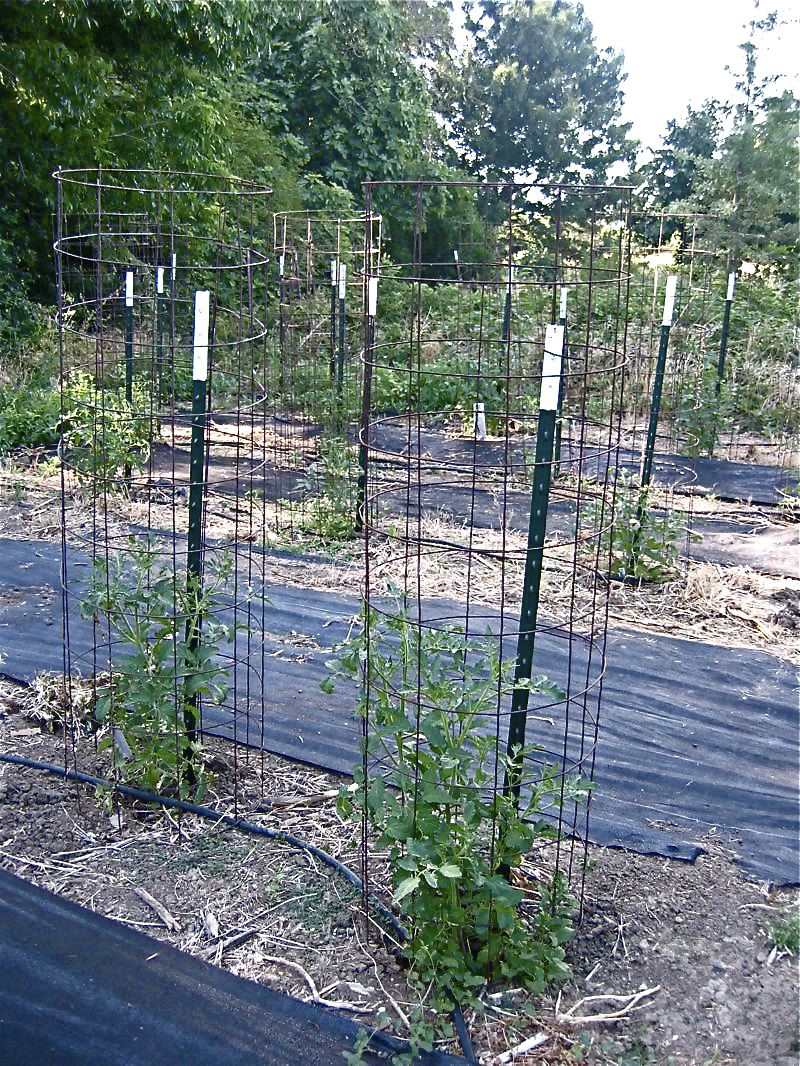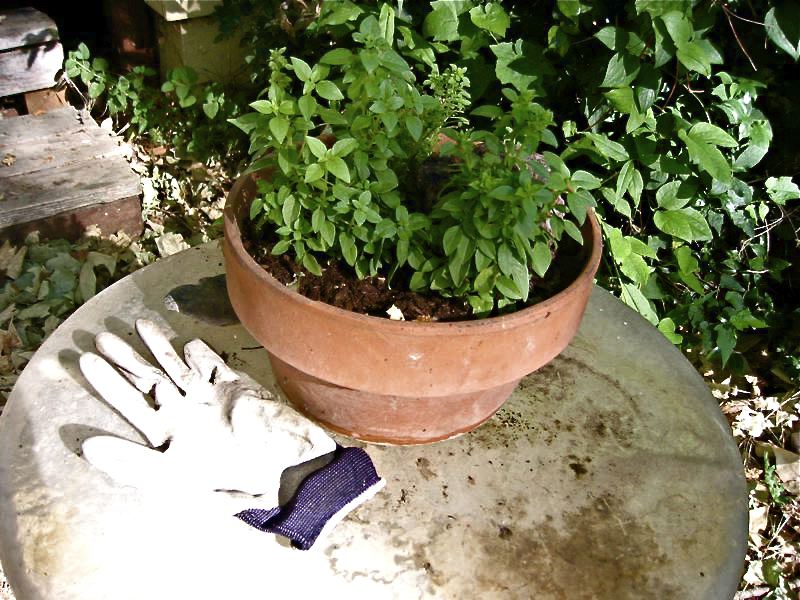Food gardening is back!
From the Davis Enterprise, June 26th, 2008
Media reports indicate a resurgence of interest in growing vegetables and fruit.
* W. Atlee Burpee Seed Co. and Stark Bros. fruit tree growers, both venerable institutions in the mail-order nursery business, report increased sales in 2008.
* According to Park Seed company's director of seed products, "It's a combination of factors. The most economic way to grow fruits and vegetables is from seed and there's a whole healthy, local food movement at work too."
* Speaking of vegetable seeds, from The Guardian of UK: "....sales reportedly rising by up to 60% on last spring. Clare Dixey, of the Sussex seed supplier Thompson & Morgan, said: "People are more conscious of where their food comes from and they would rather have plot-to-pot runner beans than have 10-day-old ones shipped over from Kenya. It is far cheaper and far healthier."
Plot-to-pot? What a charming term! The article goes on to list some great "plot-to-plate plants" for home gardeners.
The prices of many food products are rising fast this year due to increased fertilizer costs (thank the red-hot ethanol market; corn is a major consumer of synthetic fertilizer) and high shipping costs. The price of fossil fuels has rippled out into the agricultural industry directly and indirectly.
But as author Michael Pollan (An Omnivore's Dilemma) notes in an essay in the NY Times: "Growing food, we forget, comprises the original solar technology: calories produced by means of photosynthesis."
He goes on to extol the philosophical and practical virtues of vegetable gardening: "Yet the sun still shines down on your yard, and photosynthesis still works so abundantly that in a thoughtfully organized vegetable ... you can grow the proverbial free lunch .... This is the most-local food you can possibly eat (not to mention the freshest, tastiest and most nutritious) ...What else? Well, you will probably notice that you're getting a pretty good workout there in your garden, burning calories without having to get into the car to drive to the gym....Also, by engaging both body and mind, time spent in the garden is time (and energy) subtracted from electronic forms of entertainment."
There are food gardeners who grow enough to feed their families and neighbors, who can and freeze and dry. My mother eats vegetables from her garden, fresh or frozen, nearly every day. But your food garden can be a simple as some fresh herbs in a container, a half oak barrel stuffed with some vegetable plants, or a small plot of ground at a community garden or on the side of the house.
It's not too late to plant some vegetables for this summer, and herbs can be planted any time of year. You may have already planted, and are wondering what to do now.
Gardening in Davis:
Our climate zone. We are in Sunset Zone 14, USDA Zone 9. We are frost-free from March through mid-November. Our summer gardening season is over 150 days. Our official frost-free season is over 220 days, and winter frosts are light enough that many vegetable crops are unaffected.
Our seasons. We can grow vegetables year-around here, with two distinct planting seasons. We plant spring to early summer for summer and fall harvest. We also plant in fall and winter for winter to spring harvest: salad greens, cabbage and broccoli and their relatives, and many root crops.
Our soil. We have mineral soils nearly devoid of organic material, ranging from clay loam to sandy loam. Vegetables like compost or manure dug in at the time of planting. But our soils hold water and nutrients, and drain well, so many of the more elaborate gardening techniques you may read about, such as square-foot gardening or biodynamic gardening, are more effort than necessary. Hereabouts, we just turn in some compost and plant. This is farmland, after all.
Some basic pointers for vegetables:
Choose your location. Full sun is best, 4 - 6 hours is really the minimum. Food gardens in the shade are a challenge, although there are some herbs that you can grow and a few varieties of vegetables may succeed (Shady Lady tomato, for example).
Prepare your soil, feed your plants. You can buy bulk compost from local rock yards, spread an inch or so over the whole garden area, and rototill it in. Or you can buy bags of compost and mix in a couple of shovelfuls for each plant. You may want to make a compost pile to avoid this expense in the future. A little starter fertilizer is helpful at the time of planting. If you've already planted, you can "side-dress" your plants with a vegetable fertilizer: just sprinkle it along the row next to the plants and water it in. Or you can use a soluble plant food such as fish emulsion.
Make watering easy. We get no rain between April and October! A soaker hose or drip line will make your life easier. I suggest one line for your tomatoes, and one line for everything else, because tomatoes give best results when watered deeply and infrequently. A cost-free approach is to dig trenches alongside your rows and simply fill them with water once or twice a week.
Prevent weeds. Summer weeds grow very fast in newly turned soil, and by August your garden will likely be choked with them if you don't act to prevent them now. Landscape fabric is an attractive and durable way to keep weeds down. Roll out the fabric and anchor it down securely with small metal pins. If you've already planted, chop or pull the existing weeds and roll the fabric around the seedlings. Plan to walk through every couple of weeks and pull weeds that grow in the gaps. The fabric helps keep moisture in the soil, blocks sunlight to prevent weed growth, and makes effective paths. Old carpet scraps can accomplish the same thing.

Mulch well, water wisely. This bell pepper seedling has a drip irrigation line with an emitter right next to the base of the plant. Straw mulch has been laid around it to retain moisture and prevent weeds.
Mulch. A thick layer of mulch smothers weeds, keeps soil moist, encourages worms, and enriches the ground as it decomposes. It protects certain fruits such as cantaloupes and strawberries by lifting them off the soil away from bugs. I have purchased grass or alfalfa hay from a local feed store. For a more permanent mulch you can buy bark chips from the local rock yard, or in bags from the nursery or garden center.
Stake. Cucumbers, gourds, pole beans, and tomatoes are vines. Grow them up on something or they'll run all over your garden - cherry tomatoes can grow to 15 feet! I use concrete wire which I fashion into cages and stake securely. But you can use bamboo or redwood stakes and just tie the plants as they grow.
Pumpkins and melons are also vines, but the fruit is too heavy to support on a structure - so we just let them run. Hence, they are big space-users. Peas are winter-grown vines that need light support.

Staked and caged. Most tomato vines will grow to more than 6' tall! Staking techniques vary. Shown here are cages made of concrete wire, attached to metal fence stakes. By the end of the summer the plants will be out the top and halfway back to the ground, laden with fruit.
A few varieties such as Ace, Roma, and Patio, stay more compact. Those would be better choices for containers or small gardens.
Watch for pests.
But don't freak out about a little damage. There are organic control options for nearly every garden pest. In many cases, the damage is seasonal and minor. Garden experts can identify problems from damage samples (take a picture with your cell phone!) and tell you what to expect and what, if anything, to do.
Decisions, decisions.
What do you like? How much to plant?
If I were limited for space in my summer garden, I'd plant 3 - 4 tomatoes, a couple of types of peppers, perhaps an eggplant, some basil plants, a cucumber, a squash plant, some strawberries, and perhaps some potatoes. I'd do seeds of bush beans every few weeks, or a teepee of pole beans, and seeds of radishes in any spare space. Plant some okra if you like it; it grows very readily here. I always plant sunflowers.
All of that could be planted in a 50 - 60 sq. ft. area, though it would be pretty crowded. More space? Consider corn, melons, and pumpkins. If you don't have a place in the yard, there are dwarf varieties of many vegetables you can grow in containers.
The winter garden can be planted more closely, as greens and cole crops (broccoli, cabbage, etc.) are much more compact growers. We start planting cool-season vegetables in late summer and continue through February.

Limited space? There are dwarf varieties of many edible plants. Three plants of Spicy Globe basil, planted together in a 12" clay pot, provide enough for recipes throughout the summer. Basil can take light shade or full sun.
Welcome to the world of food gardening! Don't be overwhelmed! Just try different things, see what works, and have fun.
Some resources:
* The Sunset Western Garden Book. The new edition (2007) is disappointing for food gardeners. Look for older editions that had a vegetable planting chart. Your gardening friends may be willing to part with their well-worn older copies.
* MarthaStewart.com. Yep, the lifestyle maven has one heck of a vegetable garden. Check out the aerial photos! Watch the video of one of her gardeners fashioning tomato teepees out of bamboo poles! Her article Vegetable Gardening 101 gives a good overview.
* At our web site (www.redwoodbarn.com) there are general articles about vegetable gardening, a vegetable planting calendar, and a chart of winter vegetables.
© 2008 Don Shor, Redwood Barn Nursery, Inc., 1607 Fifth Street, Davis, Ca 95616
www.redwoodbarn.com
Feel free to copy and distribute this article with attribution to this author.
Click here for Don's other Davis Enterprise articles
